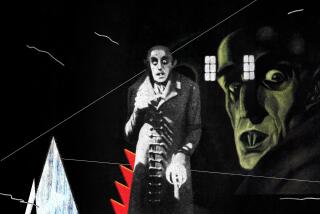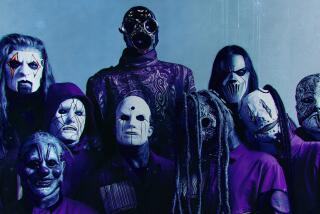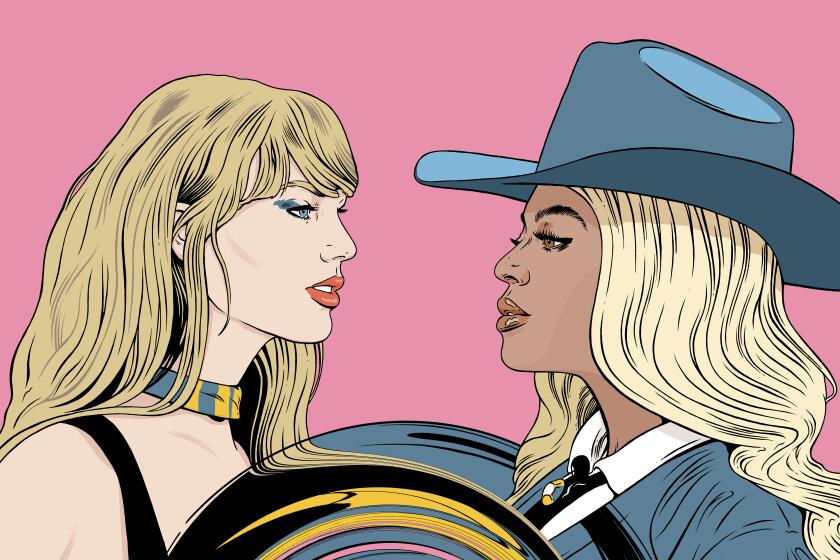How a natural sonic perspective tuned ‘Sound of Metal’
The aural journey of “Sound of Metal” resonates, leaving you with the unnerving feeling of what it’s like to lose your hearing. However, the allegory, co-written by bothers Darius and Abraham Marder, is less about loss and more about acceptance.
Riz Ahmed plays Ruben, a drummer in a rock band alongside his singer-girlfriend, Lou (Olivia Cooke). During a soundcheck, he experiences a sudden ear pop that leaves him nearly deaf. It’s in this moment where the sound team, led by supervising sound editor Nicolas Becker, begins to guide the story with a purposeful, immersive soundscape.
Becker, who also served as sound designer and shared a composer credit with Abraham Marder, sat down with The Envelope to unpack its experiential acoustics.
How did you philosophically approach the sound?
We wanted it to be effective without overplaying everything. Darius is very particular with his films, and our starting point was always to be very naturalistic and then find the best balance between the reality and the fictional side.
The opening concert sequence sure felt real.
Riz and Olivia are actually playing in that scene. They spent six months learning to sing and play the guitar and drums. When you see Riz drumming, it’s him.
Well, it’s a transfixing scene that gives you reason to believe why Ruben lost his hearing without it being cacophonous.
We tried to do something that was very powerful in that moment but wasn’t too loud. We experimented with it to give the idea of energy. We wanted the audience to feel the level when you play as a drummer but to also experience it from Ruben’s perspective — to put people on the stage with the musicians.
Glad you brought up perspective. It’s something you used advantageously in the soundscape where we feel and hear what Ruben’s going through as he loses his hearing. What research went into developing his perspective?
I was brought in a year before they started shooting. Darius came to my studio to speak about the film where we listened to music, watched films with similar ideas, and when cinematographer Daniël Bouquet came on, we spoke about the relation we could have between sound and picture.
We wanted to create a journey where we can try things and experiment. I brought Darius into an anechoic chamber, which completely absorbs sound, to not only allow him to feel the void, but to share ideas and the experience — to feel the emotions and the sensations so they can be put on-screen.
We don’t always hear things from Ruben’s perspective. How did that concept evolve?
At the start, we had a lot more of that immersive point of view through Ruben. Every time there was a close-up. But we found that was tiring, as the picture moves in and out. With our editor, Mikkel E.G. Nielsen, we were able to find the best balance and learned that there’s still a subliminal association to that perspective even if the audience doesn’t hear it.
You mentioned designing sounds from reality. This story explores the deaf community. Did you connect with the deaf to create an authentic point of view?
We spoke with people who had lost their hearing during their life. They were able to describe to us how it sounds and shared the different states of hearing loss. We tried to get the most information from the real world, and then we dealt with the fictional side of the film while never pushing too much.
What went into designing Ruben’s hearing loss?
We designed sounds for his hearing loss and for when Ruben wears his cochlear implant. When he starts losing his hearing, Darius wanted Riz to physically feel it during production, so we put a device on him to simulate his hearing loss in real time. We also recorded Riz’s breathing with a DIY micro stethoscope. Then in the edit, we tested different versions to structure the immersive point of view. For the implant, we modeled the sounds after speaking with people who have lost hearing and received the implant.
Can you share how you developed those sounds in particular?
I’ve been doing foley for a long time, and having worked on “Gravity,” I did a lot of research from the perspective of astronauts and the idea of recording sound through vibrations of the body in low frequencies. We did a lot of experiments with different microphones, like geophones, accelerometers, hydrophones and contact mics to recall that.
I don’t like to process too much, so the majority of sounds were recorded during shooting. What you’re hearing is the internal pressing or movements of Riz’s body. Even our foley artist Heikki Kossi put mics on his body so what you hear is how the body sounds internally.
There’s a scene near the end of the movie that’s in complete silence — rare in sound design, but the use felt intrinsic to the moment.
When we mimic silence, we always put a bit of hiss, but Darius said he didn’t want anything but void. He wanted the audience to experience that and stay with Ruben in that silence, to be even more uncomfortable and think more about it.
How did music influence the final mix?
We didn’t want the music to articulate more than the film or be something textual. The additional music is a resonance, a ghost, of the first concert. I used an instrument called the baschet, which sounds like acoustic synthesizers or like phantom orchestral sounds. The music ended up being a mix between the sounds of the concert from the opening scene and the baschet. We created something subtle where you don’t know if it’s music, but you do feel what it is emotionally.
With such a visceral aural palette, did you treat workflow any differently?
At the start of the editing process, we went to Los Angeles to meet up with music producer Mario Caldato Jr., who is a former producer of the Beastie Boys, to create some roughness and heaviness with the drumming. But for final mix, we went to Mexico in the middle of the mountains to a studio that was super silent. I think it helped to put us in the right mood.
That sounds like an unforgettable experience.
For me, it’s important to work with artists and the idea of gesture, where it’s not only the result that’s important, but the way you do it. That’s what the meaning of the film is about. What you want is not important, but what is, is the experience and what you learn through that journey.
More to Read
From the Oscars to the Emmys.
Get the Envelope newsletter for exclusive awards season coverage, behind-the-scenes stories from the Envelope podcast and columnist Glenn Whipp’s must-read analysis.
You may occasionally receive promotional content from the Los Angeles Times.







